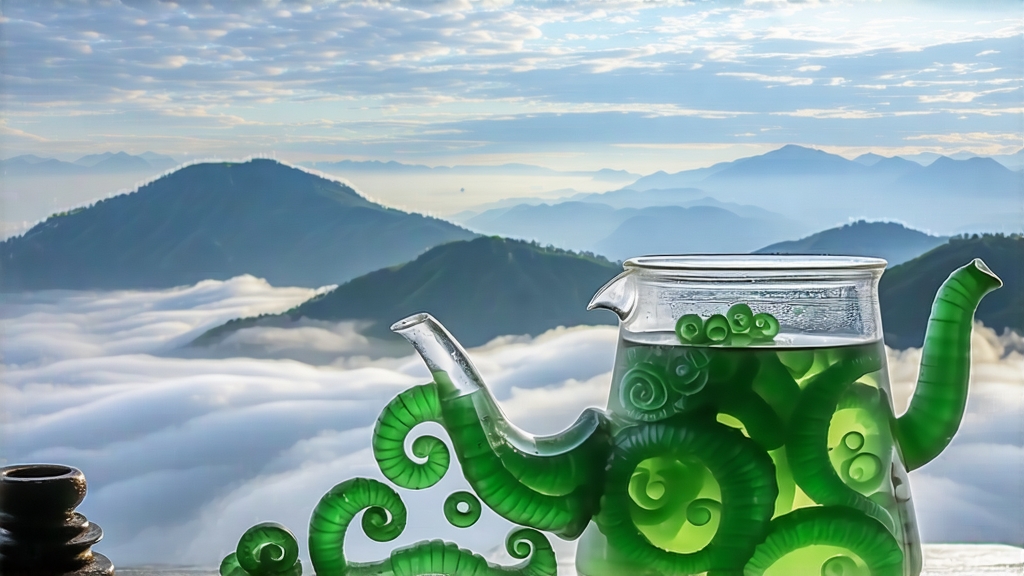
When early March fog still clings to the islands of Dongting Lake in Jiangsu Province, local tea pickers step into the moist apricot-scented air to begin the brief, almost secret harvest of Biluochun. Literally “Green Snail Spring,” the name captures both the tea’s tight spiral shape and the season that gives it life. To international drinkers accustomed to Japanese sencha or Ceylon greens, Biluochun offers a softer, almost flirtatious aroma that unfurls like the lake mist itself—an invitation to explore one of China’s oldest and most romantic green teas.
Historical whispers place Biluochun’s birth during the late Tang dynasty, but credible records begin in the Ming Wanli era (1573-1620), when it was called “Xia Sha Ren Xiang”—“Scary Fragrance”—because a tea picker, startled by the strength of the aroma, thought it bewitched. The Kangxi Emperor (r. 1661-1722) sampled the tea on his southern inspection tours, found the name inelegant, and rechristened it Biluochun for its jade coils resembling tiny snails. From that moment the tea entered the imperial tribute list, traveling in silk-lined boxes to Beijing along the Grand Canal, a journey that cemented its reputation among the top ten Chinese teas.
True Biluochun comes only from the Dongting Mountain range—East and West Dongting Shan—rising from the lake like twin green tortoises. The microclimate is unique: water surfaces reflect spring sunlight back onto the bushes, delaying sprouting and concentrating amino acids, while fruit trees planted generations ago—peach, plum, apricot—interlace the tea gardens, letting their pollen drift onto the tender buds. This companion planting is not folklore; gas-chromatography studies show higher levels of linalool and geraniol, floral terpenes that explain the tea’s signature scent.
Two cultivars dominate today: the traditional “Xiao Ye” (small-leaf) landrace prized for complexity, and the hardier “Fuding Da Bai” clone introduced in the 1980s to boost yield. Purists insist only Xiao Ye harvested before Qingming festival (around 5 April) deserves the ancient name; later flushes, though fragrant, lack the buoyant sweetness that once graced imperial porcelain.
Crafting Biluochun remains one of green tea’s most delicate balancing acts. Picking begins at dawn when two leaves and a bud are still furled and sticky with overnight dew. No fingernails are allowed—pickers roll the shoot between thumb and forefinger so the cell sap is not oxidized by metal. Baskets are shallow to prevent bruising, and leaves reach the farmhouse within two hours.
Withering is skipped; instead the leaves are immediately “sha qing” (kill-green) in woks heated to 180 °C. A single kilo requires 70 000 buds, and a master stir-fryer tosses them for precisely 3–4 minutes while listening for the crackle that signals enzyme destruction. The work is tactile: palm temperature gauges the wok, fingers test moisture. Next comes the unique “cuo tuan” (rub-and-roll) stage that creates the spiral. Leaves are transferred to a 60 °C wok and rubbed against the iron surface in clockwise circles, 30 revolutions per batch, curling the bud into a tiny shell while residual moisture bonds the hairs to the leaf—hence the silvery down that glints under light. Finally, a slow 50 °C bake dries the tea to 5 % moisture, locking in fragrance that recalls lily, baby corn, and the faintest hint of marine air.
To brew Biluochun abroad, choose still spring water low in calcium; hard water dulls its florals. Pre-warm a tall glass or 150 ml gaiwan; measure 3 g of tea. The traditional Suzhou method uses 75 °C water, but for first-time drinkers 80 °C is forgiving. Pour along the glass wall to let coils descend like green snowflakes. After 45 seconds the buds begin to stand upright—“dancing tea,” locals say—then sink. Decant completely to avoid the tannic bite that arrives at 90 seconds. Subsequent infusions lengthen by 15 seconds; a quality batch yields five sweet cups before aroma fades.
Tasting notes should be recorded in three waves. The wet